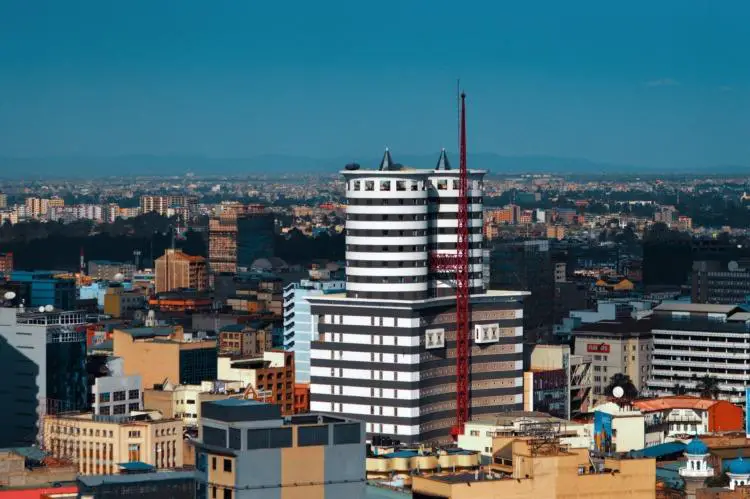The Kenya National Bureau of Statistics (KNBS) released the Economic Survey 2021, indicating that the economy contracted by 0.3% in 2020, from the restated 5.0% growth recorded in 2019.
The contraction is mainly attributable to the slowdown in economic activities due to emergence of the COVID-19 pandemic which resulted in sharp declines in demand and supply of goods and services.
The contraction was spread across all sectors of the economy but the sectors that were hard hit included the accommodation and food serving activities, education, and professional and administrative services.
Kenya’s unemployment rate doubles -KNBS
Here are some of the report’s observations:
The agriculture, forestry and fishing activities grew at a faster rate of 4.6% compared to the 2.3% growth recorded in 2019. This was despite a contraction in global demand in 2020 due to the prevailing economic situation brought about by the pandemic.
Growth in the manufacturing sector was slower in 2020, recording a 0.2% growth, down from the 2.8% growth recorded in 2019. The lower growth is attributed to declines in some sub-sectors such as; manufacture of leather and leather related products, beverages, motor vehicle, trailers and semi-trailers, and dairy products. These declines were however mitigated by increased production in sugar, tea, cement, chemical and chemical products, and pharmaceutical products.
Tourism earnings declined by 43.9% to Ksh 91.7 billion in 2020, from Ksh 163.6 billion in 2019 as hotel bed-night occupancy contracted by 58.0% to 3.8 million from 9.2 million in 2019. The number of international visitor arrivals declined drastically by 71.5% to 0.6 million from 2.0 million in 2019.
The Central Bank of Kenya (CBK) reviewed the Central Bank Rate (CBR) downwards during the year by 1.3% points to 7.0% April from 8.3% in December 2019. The downward revision was to help cushion the banking system from adverse effects of the COVID-19 pandemic. During the review period, there was a general decline in the interest rates as the lending rate for commercial banks’ loans and advances reduced to 12.0% in December 2020, from 12.2% in December 2019 while the average deposit rate reduced to 6.3% in 2020 from 7.1% in 2019.
The key highlights from the report include:
Public Debt: Total stock of public debt rose by 14.3% to Ksh6,057.8 billion in 2020 from 5,301.6 billion in 2019, with public external debt accounting for 55.3% of the total debt. In 2020/21 a total of Ksh713.3 billion is expected to be spent on servicing public debt.
Employment: During the year, total employment outside small-scale agriculture and pastoral activities stood at 17.4 million, down from 18.1 million recorded in 2019. During the review period, informal sector employment is estimated to have contracted to 14.5 million jobs.
Money Supply: Broad money supply increased to Ksh3,990.9 billion in December 2020 from Ksh3,524.0 in December 2019. Total domestic credit grew by 50.9% to Ksh1,358.4 billion compared to a growth of 4.8% seen in 2019.
Liquidity: Quasi money, money supply (M2), broad money supply (M3), and overall liquidity grew by 10.9%, 11.9%, 13.2%, and 16.6% respectively in the review period.
Imports & Exports: Total exports increased by 7.9% to Ksh643.7 billion in 2020, from Ksh596.7 billion in 2019, mainly on account of increased value of domestic exports. As a result, the balance of trade narrowed by 17.3% to a deficit of Ksh999.9 billion in 2020, from 1,209.7 billion in 2019. The total value of trade transactions declined to Ksh2,287.3 billion, from Ksh2,403.0 billion in 2019.
Balance of Payments: The overall Balance of Payment position deteriorated to a deficit of Ksh152.5 billion, from a surplus of Ksh111.4 billion in 2019, this was partly attributable to the depreciation of the Kenyan Shilling against major currencies in 2020.
KENYA SEEKS $600M FROM CHINA TO PLUG BUDGET DEFICIT
Current Account: The current account balance improved to a deficit of Ksh491.7 billion in 2020, from a deficit of Ksh539.2 billion in 2019. The current account deficit as a percentage of GDP came in at 4.6% in 2020.
The tourism and hospitality sector recorded reduced activities following the containment measures leading to a 47.7% decline in food and accommodation services in 2020.
Analysts from Cytonn Investments said they expect Kenya’s economy to rebound in 2021, with a projected growth rate of 4.0%-4.5%, driven by the upturn in economic activities following the reopening of the services sectors including education, the recovery in manufacturing, and stronger global demand.
“Given the uneven vaccine distribution, we believe there are risks abound this economic rebound as more strains of the virus continue to be discovered.”
The other key challenge shall be the performance of the Agriculture sector given the adverse weather being witnessed currently.
It is worth noting that the KNBS has revised and rebased the national accounts with the base year changing to 2016 from 2009. The rebased nominal GDP for 2020 now stands at Kshs 10.8 trillion, from Kshs 10.3 trillion in 2019.
